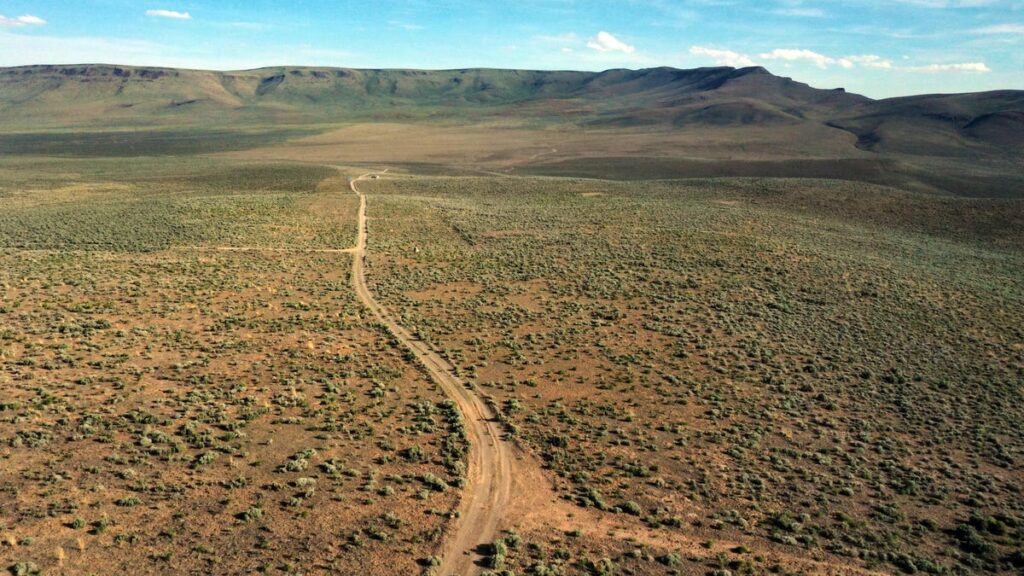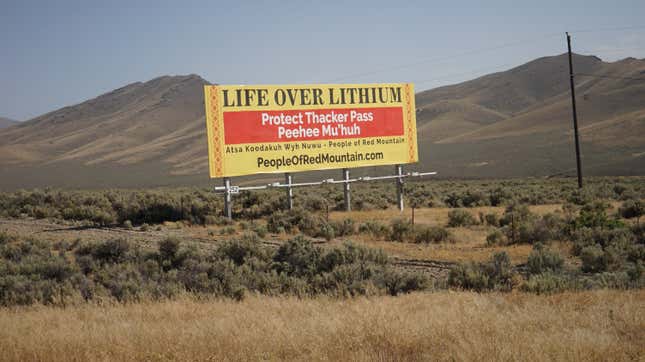A Volcano In The U.S. Could Contain The Biggest Lithium Deposit In The World

The site of a former supervolcano at the Oregon and Nevada border could turn out to be the largest lithium deposit in the U.S. and, possibly, the world. New research suggests that the McDermitt Caldera could contain over 132 million tons of lithium, which is enough to meet global demand for decades. This could give the U.S. a massive boost to its EV supply chain, and from a domestic source, no less.
There’s Not Enough Lithium for All These EVs
The amount of lithium at the caldera has the potential to dwarf that of the former largest known lithium deposit in the world, the Atacama Salt Flat in Bolivia, according to the Independent. Based on volume alone, McDermitt could yield 12 times more lithium than the Atacama Salt Flat. And, more importantly, the lithium that miners plan to extract from the caldera can be collected in a way that’s allegedly less harmful to the environment.
Photo: Carolyn Cole (Getty Images)
It’s no secret that lithium extraction is a dirty process, and that it produces a lot of harmful byproducts. The two main methods of extraction are mining lithium ore from the Earth and brine recovery. The former requires heating up rock to more than 1,000 degrees Fahrenheit using fossil fuels. And the latter is a costly, labor-intensive process that requires pumping out underground aquifers.
But due to the way the caldera formed — after a massive volcanic eruption 16 million years ago — harvesting its volcanic sedimentary lithium could be done through a third method of extraction that’s less invasive and less labor-intense. Popular Science describes it as such:
When volcanic minerals containing lithium flow into nearby valleys and react with the loose dirt, they leave behind lithium-rich sediments that require little energy and processing to separate.
The Independent cites the latest research from the scientists themselves, who add that:
“Developing a sustainable and diverse supply chain to meet lower-carbon energy and national security goals requires mining the highest-grade domestic lithium resources with the lowest waste:ore strip ratios to minimise both the volume of material extracted from the Earth,”the researchers noted in a study, published in Science Advances.
“Volcano sedimentary lithium resources have the potential to meet this requirement, as they tend to be shallow, high-tonnage deposits with low waste:ore strip ratios.”
The scientists suggest that mining in the right places will yield abundant lithium in a way that leaves little waste. It’s almost too good to be true: to happen upon the largest lithium deposit in the world right here in our own backyard. And to be able to pull most of that lithium in an allegedly less-harmful way.
The Bureau of Land Management is currently seeking public input in response to the proposal to expand lithium exploration in the McDermitt Caldera in anticipation of future mining. The proposal has already drawn criticism and protests from area tribes, including the Fort McDermitt Paiute and Shoshone and Burns Paiute, as Oregon Public Broadcasting reports.
The tribes oppose the proposed mine on the Nevada side at Thacker Pass, citing its would-be location atop sacred land. Depending on the outcome of a series of lawsuits brought by the tribes, and on whether the lithium is to be found at the McDermitt Caldera in such large quantities, mining could begin in 2026.

Photo: Zeng Hui/Xinhua (Getty Images)



